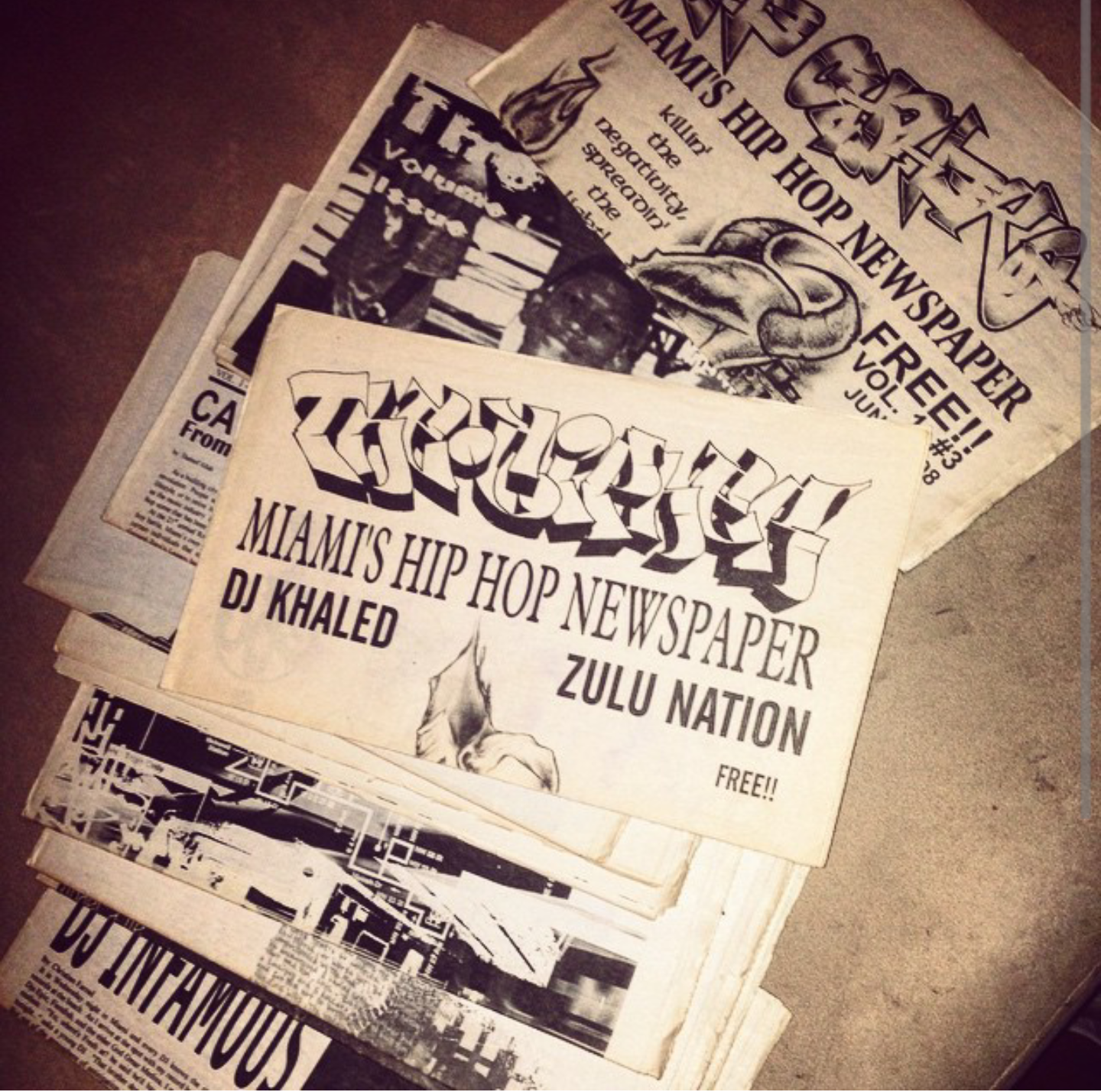
Courtesy of John Cordero

Audio By Carbonatix
Has DJ Khaled ever not been “DJ Khaled”? Is it possible that, before becoming the iconic producer, mogul, influencer, father, and motivational coach to everyone following his Snapchat, the Miami mascot was just another guy?
According to John Cordero, author of The Cipher: A History of Hip-Hop in Miami, a new book about Miami’s late-’90s hip-hop scene, the answer is yes. Khaled was just a local DJ spinning records at countless parties and on the city’s college and pirate radio airwaves.
“Back then, he was just one of many local DJs,” Cordero says. “Just to see that progression is very interesting.”
Khaled is only one of many colorful characters in the author’s long-awaited book. In 1995, Cordero moved from Orlando to Doral. Not far from his home, he found a section of abandoned houses near the Mall of the Americas where graffiti artists would hone their craft before the cops would chase them away. It was a gateway into the local hip-hop culture he would soon begin documenting.
“I noticed there was no commentary or exposure in the hip-hop magazines – the big ones, the Source, Vibe,” Cordero recalls. “They were basically ignoring Miami completely.”
Cordero founded the Cipher, a free hip-hop newspaper, in 1998. The publication covered every facet of the local scene, from DJs, dancers, and graffiti writers to the best parties and events. It was short-lived, running for only two years before sponsors pulled their funding, but in that time, the paper had gained a dedicated readership in Miami and allowed Cordero and company to rub elbows with rap royalty.
“We were being invited to all these big events with the big artists, like Jay-Z, Ja Rule, all the famous artists back then in the late ’90s. We interviewed Outkast; we interviewed Phife Dawg.”
The deaths of Phife Dawg and several others on the local scene, along with rampant development erasing much of the area’s hip-hop history, inspired Cordero to write the book. The Wynwood Arts District is a perfect example of changes in the city. Once it was a dilapidated warehouse area that hosted local rap festivals such as Hoodstock. Now it’s a famously gentrified neighborhood where graffiti artists such as the MSG crew are paid to paint murals of Star Wars characters.
The writer, who joined the Navy after the paper folded and now works for a government think tank, felt he needed to help preserve what was once there. He reached out to friends and associates involved in the scene at the time and dove back into The Cipher‘s archives to find material for the book. He gathered stories and found old flyers for parties and photos of graffiti sites to include in the book. He even spoke to DJ Khaled himself. The result is a full-color snapshot of Miami hip-hop in the late ’90s that blends local history, classic music writing, and Cordero’s own story inside the scene.
“I thought that someone needed to document that these people were here, they did something, and they were big proponents of Miami hip-hop. They might not have been celebrities or famous or anything outside of Miami, but to our scene, they were our local heroes.”
The Cipher will be released November 19 in hardcover at the Miami Book Fair and as an e-book. The release will coincide with Cordero’s appearance on the Miami Book Fair panel Music of the Sunshine State. The panel will also include Bob Kealing, author of Elvis Ignited: The Rise of an Icon in Florida, and Jacob Katel, author of A People’s History of Overtown, Vol. 1.